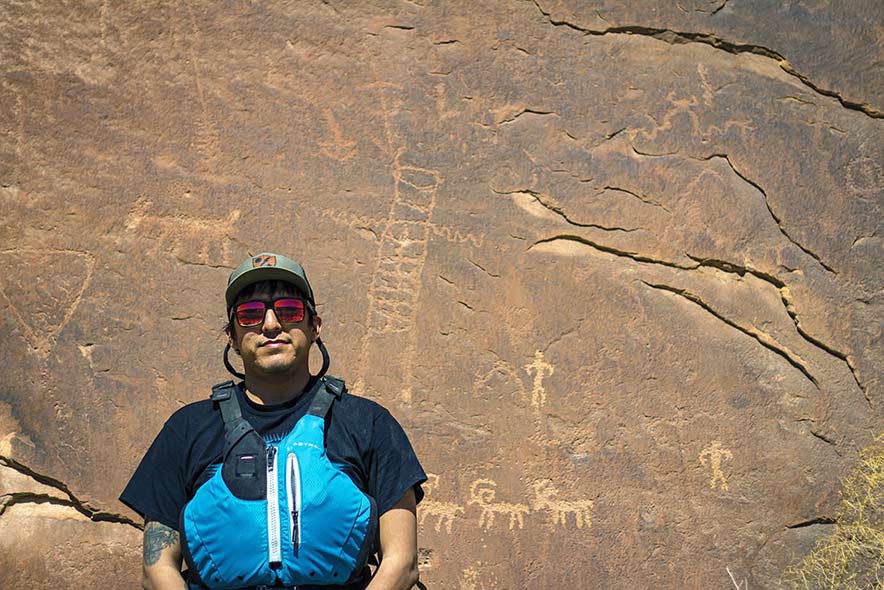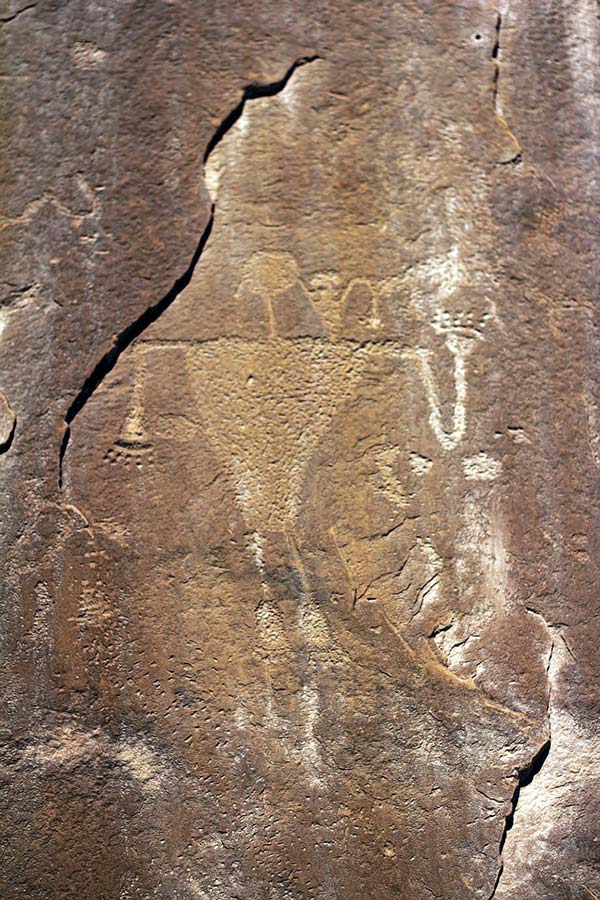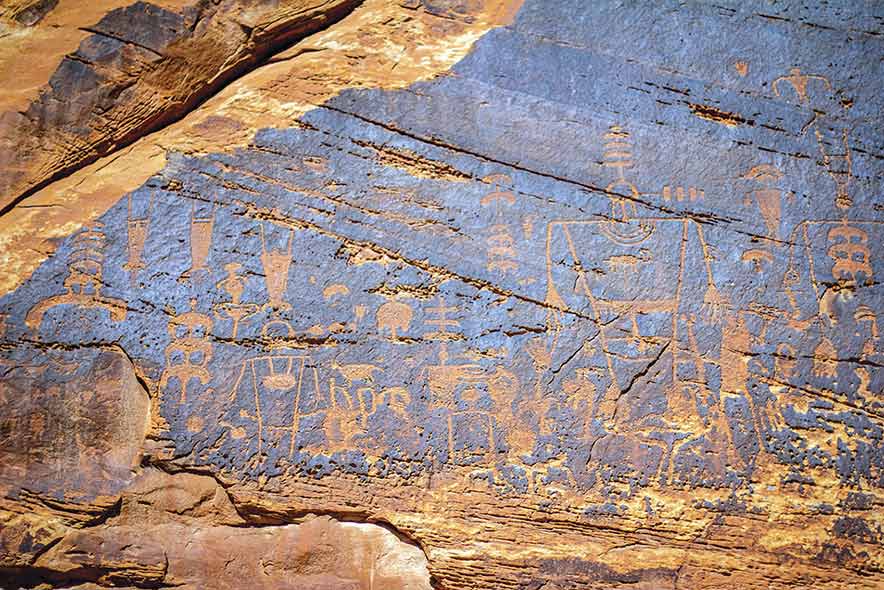
Reporter’s Notebook | We are all natural storytellers
By Cyrus Norcross
Special to the Times
BLUFF, Utah

Special to the Times | Cyrus Norcross
Cyrus Norcross stands in front of petroglyphs along the San Juan River. The petroglyphs are estimated to be around 4,000 years old.
I recently finished a rafting trip on the San Juan River with colleagues and came across the idea that we are all storytellers.
Throughout the trip, we had conversations regarding Navajo politics, agriculture, economics, technology and our ancestors.

Special to the Times | Cyrus Norcross
A petroglyph with a humanoid figure with long arms appears to look like a monkey or small human being on its shoulder.
At certain points, our river guide, John Hosteen, stopped along a beach to show us petroglyphs.
As we looked at these images, our group came up with many theories on what rock art could mean.

Special to the Times | Cyrus Norcross
Petroglyphs along the San Juan River. There is a mammoth in one of the humanoid figures.
One idea we came up with is that the petroglyphs were used as a way to teach others about their history similar to how whiteboards are used in today’s educational institutions.
Another idea is that the art was created as a form of record keeping of one’s daily habits. An analog of this would be like vlogging, journaling or creating TikTok videos.
I brought up the idea that maybe there was an artist who was bored and just wanted to draw what was seen on that day, similar to how children draw what they interact with and share their artwork with parents.

Special to the Times | Cyrus Norcross
Bree Lameman rafts along the San Juan River. Petroglyphs are seen along the river.
Being an anthropology major at Arizona State University, I wrote in my journal about what we found and our theories on the meaning of rock art.
As I was writing, I came to the conclusion that we, as a human species, just want to share our stories and that storytelling is a survival tool for human society.

Special to the Times | Cyrus Norcross
John Hosteen tells a story to a group of rafters along the San Juan River.
We share stories to express ourselves, educate our community, inform the public, teach children, entertain others and to thrive in our environment.
The form of storytelling takes many shapes and can be through video, photos, writing, drawing, painting, TikTok stories, oral history and performance art.
The impact of COVID-19 on the Navajo Nation was extremely negative and stopped many of our traditional gatherings. As a result, we started to share and embrace cultural traditions through digital platforms.
I am hearing stories I have never heard before about my own Navajo people through the many digital voices.
I have seen workshops on Navajo culture, Navajo storytellers, Navajo astronomy, Navajo agriculture meetings and much more.
There are now numerous Native influencers on platforms such as YouTube, Facebook, Instagram, TikTok and their messages range from parody skits, traditional storytelling, news recaps, and political theory.
The impact these influencers have had during the pandemic has allowed people to stay connected to their culture.
The use of these digital platforms gives Native people a fighting chance to combat the effects of losing our traditional identity.
These stories that you share will have a lasting impact on future generations and will stay etched in their minds just like the petroglyphs.
Storytelling is a part of who we are and I want to encourage you, the reader, to continue to share your stories with all of us.
The world is your audience.








 Highway 264,
Highway 264, I-40, WB @ Winslow
I-40, WB @ Winslow